Feeding birds in your garden or balcony is a delightful way to connect with nature and support local wildlife. Ceramic bird feeders are an attractive option for this purpose, providing an aesthetically pleasing and durable alternative to plastic or metal feeders. Their elegant designs can enhance the beauty of any outdoor space while serving as a functional tool for attracting various bird species.
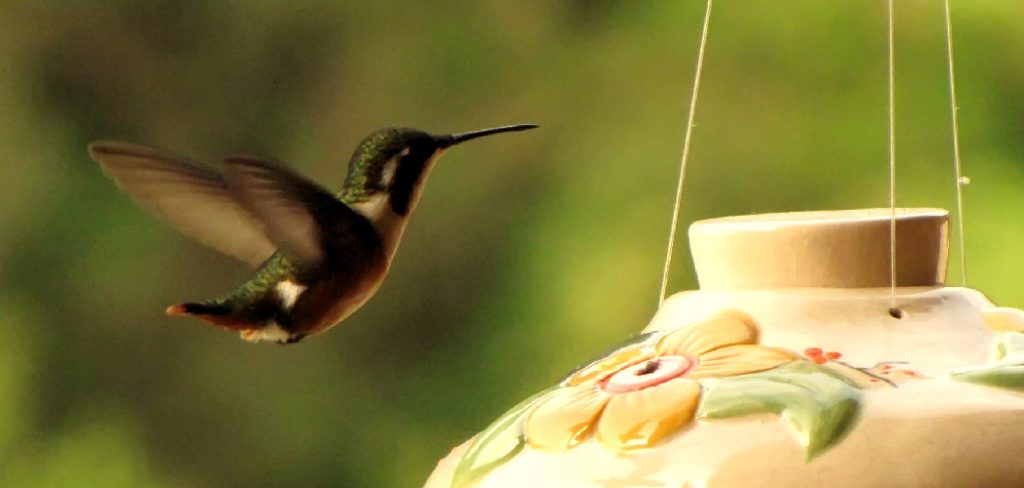
In this guide on how to use ceramic bird feeders, you will learn the advantages of using ceramic feeders, how to properly set them up, and tips for maintaining them to ensure a safe and welcoming environment for your feathered visitors.
Why Choose Ceramic Bird Feeders?
Ceramic bird feeders have several benefits that make them a popular choice among bird enthusiasts. Here are some of the advantages of using ceramic feeders:
Durability:
Ceramic is a strong and long-lasting material, making it ideal for outdoor use. Unlike plastic or metal, ceramic does not rust or deteriorate easily, ensuring that your feeder will last for years to come. This durability also makes ceramic feeders a cost-effective option in the long run.
Aesthetics:
Ceramic bird feeders come in various designs, colors, and patterns, making them a beautiful addition to any outdoor space. Their intricate details and hand-crafted appearance add a touch of elegance to your garden or balcony while providing a functional purpose.
Safe for birds:
Ceramic is a non-toxic material, making it safe for birds to perch on and consume food from. Unlike plastic, which can release harmful chemicals into the environment over time, ceramic feeders do not pose any health risks to birds.
Needed Materials
Before setting up your ceramic bird feeder, make sure you have all the necessary materials. These include:
Ceramic Bird Feeder:
Choose a design that best suits your aesthetic preferences and can accommodate various bird species. Make sure the feeder has drainage holes to prevent water from accumulating and spoiling the food.
Bird Seed:
Different bird species have different dietary needs, so choose a high-quality bird seed mix that can attract a variety of birds. Sunflower seeds, millet, and suet are popular options that provide essential nutrients for birds.
Hook or Hanger:
You will need a hanging mechanism such as a hook or hanger to suspend your feeder from a tree branch or balcony railing.
Optional Accessories:
You may also consider adding accessories like perches or weatherguards to your feeder to make it more appealing and functional for birds.
8 Step-by-step Guidelines on How to Use Ceramic Bird Feeders
Step 1: Choose the Right Location
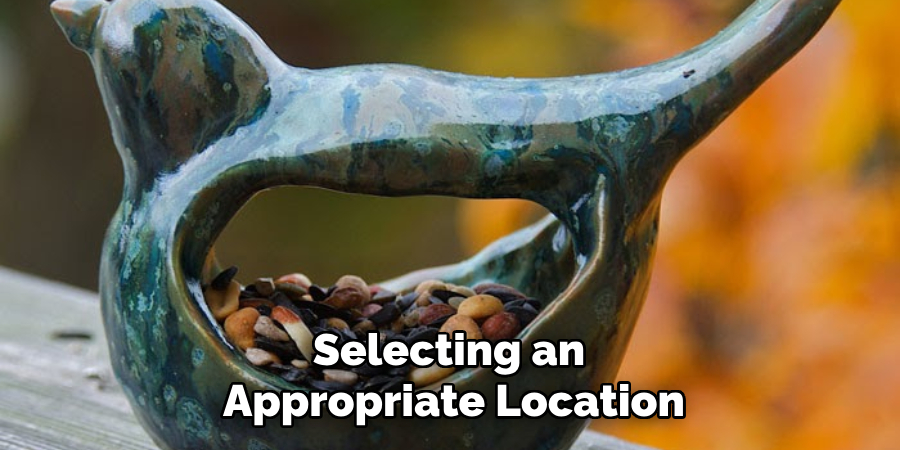
Selecting an appropriate location for your ceramic bird feeder is crucial for attracting birds and ensuring their safety. Look for a spot that is easily accessible to birds, such as near trees or shrubs that can offer shelter and protection. Avoid placing the feeder too close to busy areas with heavy foot traffic, as birds prefer quieter spaces where they feel secure.
Ensure the location provides a clear line of sight for birds to watch for potential predators, and try to position the feeder within view from a window for your enjoyment as well. Additionally, choose a spot that is away from sources of pollution or harmful chemicals that could affect the birds’ health.
Step 2: Assemble Your Feeder
Once you have chosen the perfect location, it’s time to assemble your ceramic bird feeder. Start by carefully unpacking all components, ensuring there are no cracks or damages to the ceramic surface. If your feeder requires any assembly, follow the manufacturer’s instructions to put it together. This often involves attaching any removable parts such as hooks, perches, or trays securely to the main body of the feeder. Make sure all parts are aligned properly to prevent food spillage or structural instability.
If your feeder has drainage holes, ensure they are not blocked to allow rainwater to escape, preserving the freshness of the bird seed. Once assembled, hang the feeder from the designated hook or support and ensure it is stable and balanced. A properly assembled feeder will provide a safe and appealing place for birds to come and enjoy their meals.
Step 3: Fill the Feeder with Bird Seed
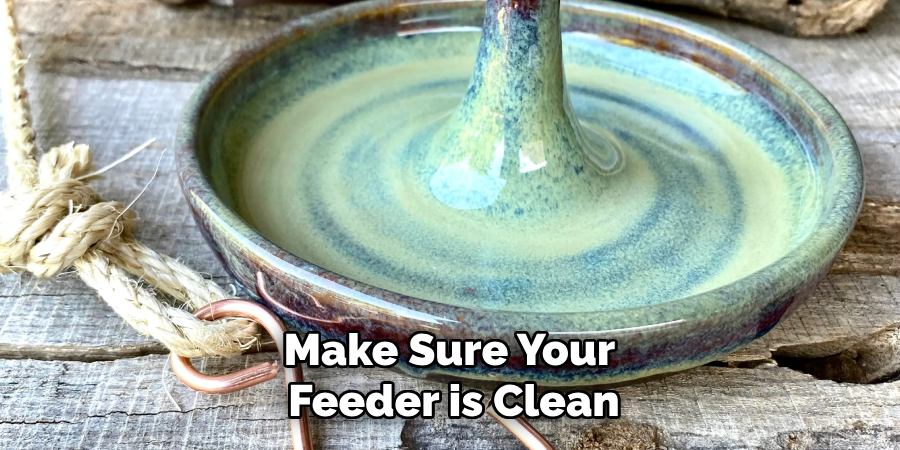
Before adding birdseed, make sure your feeder is clean and free of any dust or debris. Pour enough birdseed into the feeder to cover the bottom tray or dish, ensuring there is ample space for birds to perch and consume food comfortably. Avoid overfilling the feeder, as this can lead to food spoilage and waste. You may also want to mix in some grit or crushed eggshells to provide essential minerals for birds’ digestive systems.
But be cautious when adding these to your feeder, as they can attract unwanted pests like squirrels and raccoons. You may want to consider using squirrel-proof feeders or placing a baffle around the feeder’s pole for added protection against pesky critters.
Step 4: Monitor and Refill Regularly
Check your bird feeder at least once a day and refill it as needed. Birds rely on feeders for an essential source of food, especially during harsh weather conditions when natural food sources are scarce. Regularly monitoring and refilling the feeder ensures that birds have access to fresh, uncontaminated food, promoting their health and well-being. It also prevents mold growth inside the feeder, which can be harmful to birds.
You can also experiment with different birdseed mixes to attract a diverse range of birds and keep them coming back for more. Some birds may prefer sunflower seeds, while others may be drawn to suet or millet. Keep track of what works best in your feeder and adjust accordingly.
Step 5: Clean Your Feeder Regularly
Bird feeders can become breeding grounds for bacteria, mold, and other harmful pathogens if not cleaned regularly. Avoid using harsh chemicals or detergents when cleaning your ceramic feeder as they can leave behind toxic residues that could harm the delicate digestive systems of birds. Instead, use warm water and a mild soap solution to scrub away any build-up on the surface of the feeder. Rinse thoroughly and let it air dry before refilling with birdseed.
It is recommended to clean your ceramic bird feeder at least once a week, but more frequent cleaning may be necessary if you notice any mold growth or spoiled food.
Step 6: Provide Fresh Water
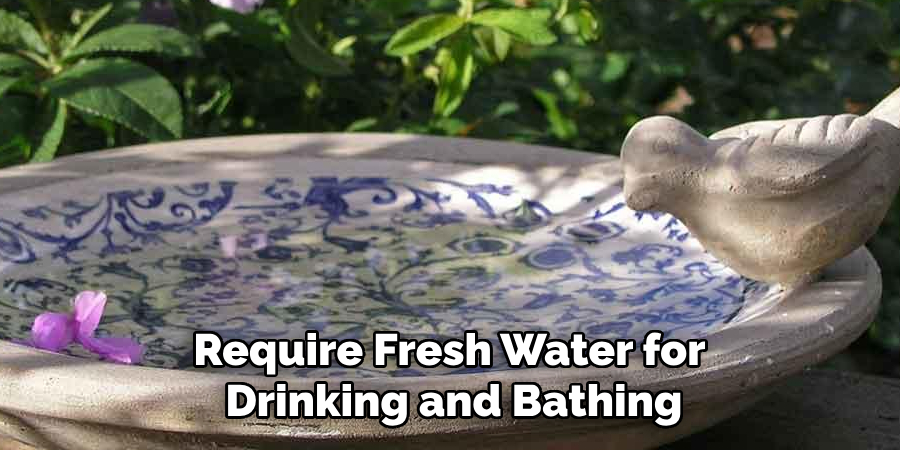
Birds not only need food but also require fresh water for drinking and bathing. Consider placing a birdbath near the feeder or attaching a small water dish to the feeder itself. Make sure to clean and refill the water regularly as well, as standing water can quickly become stagnant and attract mosquitoes.
It is especially crucial to provide fresh water during the hot summer months when natural sources of water may dry out.
Step 7: Observe and Enjoy
Now that your ceramic bird feeder is up and running take some time to observe the birds that come to visit. Keep a safe distance and avoid disturbing them as they enjoy their meals. You may want to invest in a bird identification book or app to help you identify different species visiting your feeder.
Watching birds can be therapeutic and educational, making it a great activity for people of all ages. So sit back, relax, and enjoy the show!
Step 8: Maintain Your Feeder
Regular maintenance of your ceramic bird feeder includes checking for any damages or cracks and repairing them promptly to prevent potential harm to birds. You may also want to consider adding accessories like perches or weatherguards to your feeder to make it more appealing and functional for birds.
By following these simple steps on how to use ceramic bird feeders, you can attract a diverse range of feathered friends to your ceramic bird feeder while ensuring their safety and well-being. Just remember, with great joy comes great responsibility – so be sure to maintain and clean your feeder regularly for the health of both the birds and yourself. Happy birding!
Frequently Asked Questions
Q: How Often Should I Clean My Ceramic Bird Feeder?
A: It is recommended to clean your feeder at least once a week, but more frequent cleaning may be necessary if you notice any mold growth or spoiled food. Regular cleaning helps prevent the spread of bacteria and keeps birds healthy.
Q: Can I Use Any Type of Soap to Clean My Feeder?
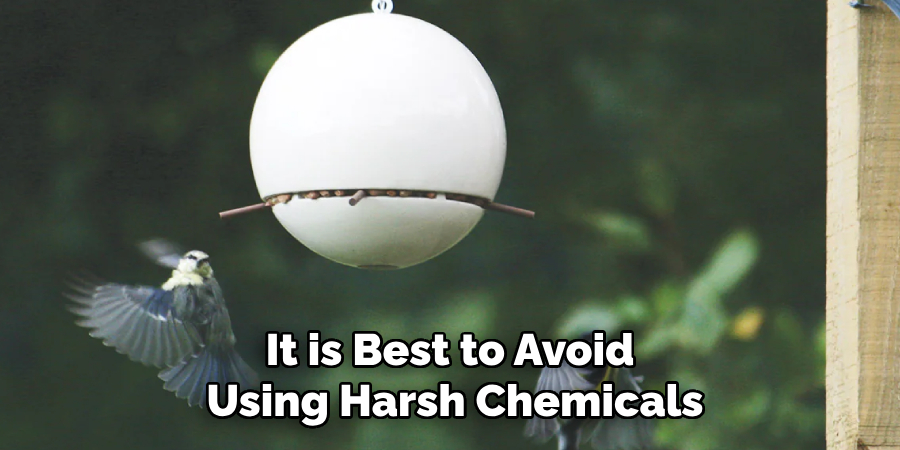
A: It is best to avoid using harsh chemicals or detergents when cleaning your ceramic feeder, as they can leave behind toxic residues that could harm birds’ delicate digestive systems. Instead, use warm water and a mild soap solution to scrub away any build-up on the surface of the feeder.
Q: How Do I Attract Birds to My Feeder?
A: Different bird species may be attracted to different types of food, so it’s essential to offer a variety in your feeder. You can also experiment with different seed mixes, providing a range of options for birds to choose from. Additionally, placing the feeder in a safe and accessible location, such as near trees or bushes, can also attract more birds.
Q: Can I Use My Feeder All Year Round?
A: Yes, you can use your ceramic bird feeder year-round. However, during harsh winter months, it’s crucial to regularly check and refill the feeder as food sources may be scarce for birds. In extreme weather conditions, you may need to bring the feeder indoors to prevent it from freezing or becoming damaged.
Q: How Do I Know What Type of Birds Are Visiting My Feeder?
A: You can use a bird identification book or app to help you identify different bird species visiting your feeder. Some feeders also have built-in perches or other features that cater to specific bird species, making it easier to identify who’s stopping by for a bite to eat.
Conclusion
Ceramic bird feeders are not only functional but also add beauty and charm to any outdoor space. By following these steps on how to use ceramic bird feeders you can attract a diverse range of feathered friends while promoting their health and well-being.
Remember to regularly monitor, refill, clean, and maintain your feeder for the best results. Enjoy the beauty and joy that birds bring as they visit your feeder. Happy birding!
Specialization:
- Master of wheel-throwing, hand-building, and advanced glazing techniques
- Focus on creating both functional pottery and decorative art pieces
Recognition:
- Celebrated by collectors and art enthusiasts for creating one-of-a-kind pieces that blend artistry with functionality
- Participates in local and national exhibitions, earning accolades for his innovative designs and craftsmanship
Passion:
- Deeply committed to exploring and pushing the boundaries of ceramic artistry
- Continuously experiments with new materials, firing techniques, and artistic concepts to evolve his craft
Personal Philosophy:
- Believes in the transformative power of art, aiming to evoke emotions and connections through his ceramic creations
- Advocates for sustainability in ceramics, using eco-friendly materials and practices whenever possible


